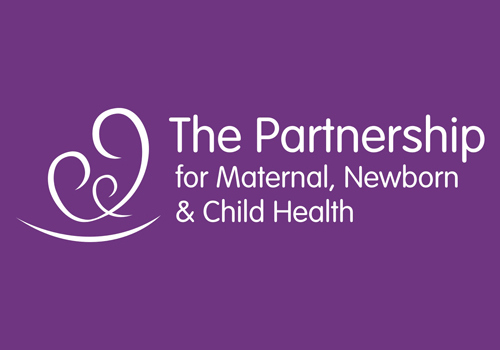Experts, Journalists push for ethical, data-driven reporting on women’s health
Media professionals and global health advocates have called for stronger collaboration to improve the visibility and accuracy of reporting on women’s, children’s, and adolescents’ health.
This was the focus of an online forum hosted by the World Health Organisation (WHO) for the Partnership for Maternal, Newborn and Child Health (PMNCH), titled “Elevating Coverage of Women’s, Children’s, and Adolescents’ Health for Media Representatives.”
The forum explored how journalists can go beyond event-based or technical coverage to produce consistent, impactful stories that connect health outcomes with broader social and economic realities.
‘Health journalism needs investment and focus’
Pamela Sittoni, Executive Editor at the Nation Media Group in Kenya, shared practical lessons from her experience managing Healthy Nation, a health pullout under the Daily Nation.
Ms Sittoni explained that consistent health coverage allows the public to understand how policies affect everyday life, from maternal care to adolescent health services.
“Good health journalism takes time, money, and commitment. Editors must see health as a beat that deserves long-term investment, not as an afterthought,” she said.
She then urged media houses to institutionalise health desks and to collaborate more with experts, saying, “Partnerships can provide the data, context, and community connections that journalists need to tell stronger stories.”
Turning grief into advocacy
Sharing a personal story, Nonkululeko Shibula, a global health advocate and board member of the International Stillbirths Alliance, South Africa, spoke about losing her baby 15 years ago and how that experience inspired her advocacy.
Ms Shibula recalled the silence and lack of communication from health workers during the ordeal.
“The loudest silence in the room was when no one said anything to me. I was moved from one room to another, and only at the end did the doctor confirm the baby was no more. I was alone,” she said.
She urged journalists to use their platforms to tell such stories and give visibility to women and families affected by stillbirths.
Driving accountability, action
In her remarks, the Director Universal Health Coverage/Healthier Populations Cluster at WHO Africa Regional Office, Adelheid Onyango, urged journalists to use their platforms to spotlight the health realities facing women, children, and adolescents across Africa, saying the continent’s future depends on how well it protects and invests in its young population.
Ms Onyango said the statistics remain alarming with two out of every three maternal deaths occurring in Africa, and the adolescent pregnancy rate in the region is more than twice the global average.
Without urgent and coordinated action, she warned, two in three children may not reach their full developmental potential.
“Our continent has the youngest population on earth, with nearly one out of every four people under the age of 20. This is both our greatest opportunity and our greatest responsibility, after all, they are our children,” she said.
She emphasised the need to view health through a life-course approach, linking maternal health, child survival, adolescent development, and adult productivity as one continuum.
Ms Onyango added that Africa has already demonstrated that progress is possible, citing major declines in maternal and under-five deaths since 2000.
However, she warned that funding cuts, weak political will, and misinformation threaten to reverse these gains.
Calling for stronger political leadership, she urged journalists to help break the silence around preventable deaths and push for greater accountability.
“There’s a lot of silence around these issues because we’ve normalised them. We need to make people understand that every life matters and that funds diverted to other priorities come at a human cost,” she said.
‘Silence, a problem’
Tulip Mazumdar, former BBC Global Health Correspondent, shared her experience covering women’s health issues and how losing five pregnancies deepened her commitment to reporting on global health.
Ms Mazumdar noted that newsrooms often struggle to prioritise such stories amid global crises, but said journalists must keep pushing to make maternal and reproductive health visible.
“The loneliness and silence that surround pregnancy loss are devastating and getting these stories on air has become harder,” she said.
“It’s because of the women and society’s silence that this issue remains hidden. People think it’s just what women go through.”
She urged fellow journalists to balance empathy with evidence, to tell stories that not only expose suffering but also highlight solutions.
Expanding on how journalists can sensitively report on women’s health, she emphasised that empathy and ethical rigor are as important as accuracy, noting that informed consent is not a formality but a protection.
Connecting data with human stories
Kemo Cham, a journalist from Sierra Leone, described the daily hurdles reporters face when covering health issues – from official stonewalling to lack of access to reliable data.
Mr Cham recounted an incident in which a radio journalist tried to report a maternal death, only to be pressured by health officials to drop the story.
He said the inability to access simple public health data such as annual mortality figures makes it nearly impossible for journalists to hold authorities accountable.
Building on his remarks, Ms Mazumdar agreed that journalists often face institutional silence but said perseverance and human storytelling can still drive impact.
“The personal reflections of people are at the core of journalism. A powerful first-person story can speak louder than numbers but when you add accurate data, it becomes undeniable.”
‘Gender gap shapes newsroom priorities’
Jeanne Bourgault, the President and CEO of Internews, a global media development organisation, described the gender imbalance in newsrooms as a massive market failure.
Ms Bourgault said the gender gap in journalism from reporting to newsroom leadership means communities aren’t getting the full story.
READ ALSO: Nigerian govt intensify field monitoring of Measles–Rubella vaccination campaign
“When women’s voices, expertise, and challenges are missing from coverage, audiences lose trust and engagement,” she said.
She outlined four layers that underpin impactful reporting: Accuracy and context, stories grounded in verified data and on-the-ground reporting; Human stories; Accountability; and Dialogue, coverage that creates two-way communication between communities and authorities.

